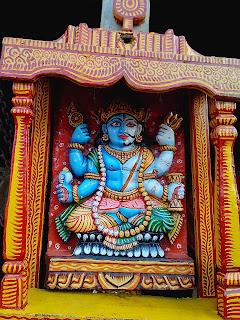The glory of Nama Japa or repetition of Divine Name
Often we come across devotees who take their Ishta Deva's or desired deity’s name either loudly or silently throughout their daily routine. For those who are not familiar with this act may ask what is the significance of this act of repetition of the Lord’s name? Or how this act will benefit the devotees in their spiritual path? The answer to the above questions would be – This continous chanting or repetition of Lord’s name while carrying out our daily routine is called “ Nama Japa ”. It calms and strengthens the mind; eradicates all kinds of evil thoughts; makes the mind introspective and forces the mind to move towards God and eventually helps to have a Darshan or glimpse of one’s Ishta Deva or God realisation. By taking Lord Rama’s name that too reversely, Ratnakara, a rogue became Valmiki – a great sage who authored Ramayana. Tukaram, a great saint had direct darshan or glimpse of Lord Krishna by repeating simply “Vitthal, Vitthal” (another name for Lord Krishna). Su
